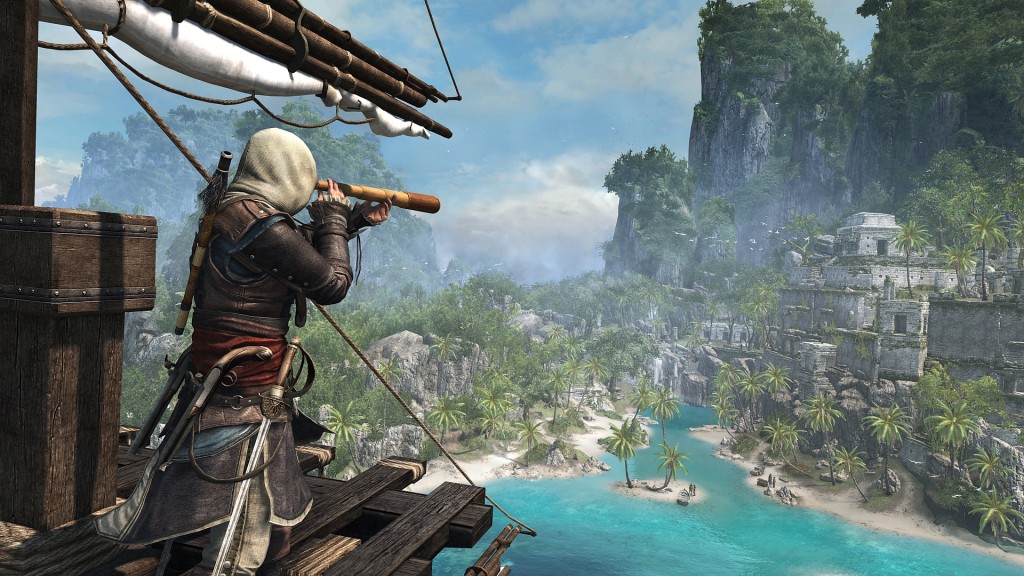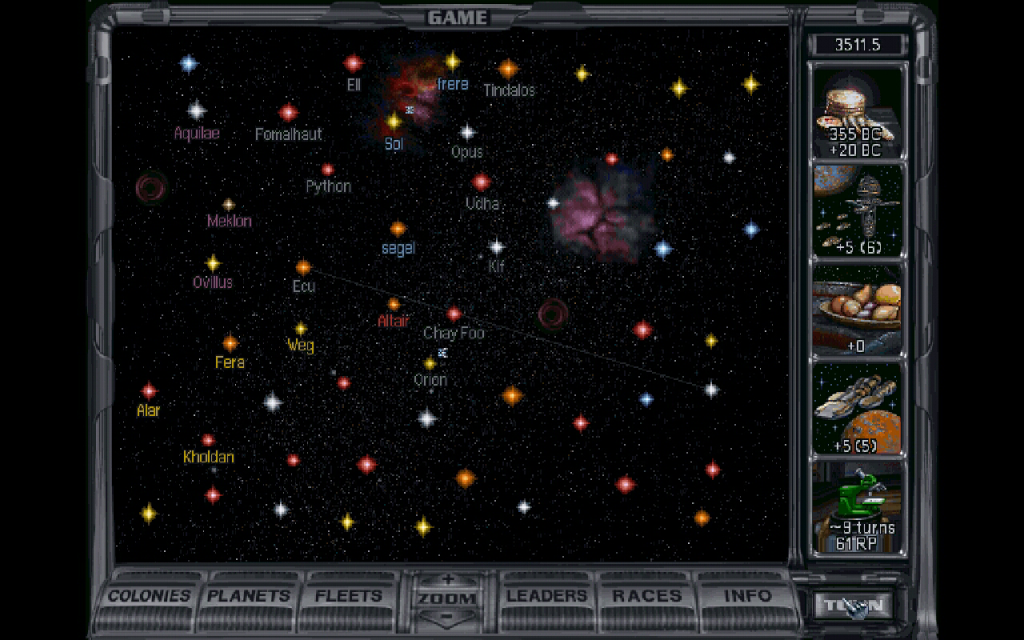This week, I present a chirpy piano take on gaming’s most iconic music (as arranged on this album). The first video is a studio recording – just the music, no background sound – and it’s pretty cool. The second is a noisy live recording, frequently interrupted by audience cheers – but it’s worth your time, because the pianist plays the first half blindfolded. Enjoy!
Age of Wonders III Preview

This is it, the biggest battle of this map so far. On my side, four towering giants – amongst the most powerful units in the game – backed by the fruits of military technology: cannon, musketeers, flame-throwing tanks. Against this, the computer’s forces are inadequate. Its giants are frightening, but outnumbered by my own. Its use of battlefield magic – “Wind Ward”, which weakens ranged attacks – is clever, given my overwhelming superiority in ranged troops, but not enough. Its regular soldiers? Pfft. A flame tank explodes beneath an enemy giant’s fists – but I have more. The enemy army dwindles. Their giants stagger, pelted by bullets and flames and magic. The last enemy giant turns toward his tormentor. I check the tooltips. The moment is ripe. My general storms in with “Charge” and “Flanking” bonuses. The giant falls.
At this point, I notice my general is riding a giant boar.
Welcome to Age of Wonders III, the upcoming fantasy turn-based strategy game from Triumph Studios. I’ve dabbled with the previous AoW games, and after interviewing designer Lennart Sas when AoW3 was first announced last year, I jumped at the chance to try out a preview build. After a number of hours, I’ve now finished two maps — the first mission in each of the game’s two campaigns – and spent some time with a third, random map; here are my impressions.
Musical Monday: “Into a World Becoming Impure” (Valkyrie Profile), composed by Motoi Sakuraba
With Dark Souls II just out, the time is ripe to highlight composer Motoi Sakuraba’s previous work! This week, I give you the opening credits theme of Valkyrie Profile, a beautiful song for a beautiful, unique RPG whose retrospective I keep meaning to write. There’s a strong, majestic element to the song, but also a more pensive one; as you listen, picture the scene in-game, as Valkyrie walks through the fields of Asgard, wind blowing around her. Enjoy! And if you’d like to listen to more Sakuraba, you can listen to my previous round-up here.
Clippings: Black Phantom Edition
Console versions of Dark Souls II are now out! Here is a good comparison betwee the three games in the series. All the reviews I’ve seen are glowing — but silent on my biggest concern. In DS2, you can be invaded by other players at any time, a change from the nice risk/reward trade-off in the previous games (if you wanted to summon in other players for co-op, you opened yourself to the risk of invasion). I love these games, but given my awful track record in PvP, that’s a potential deal-breaker. Can anyone comment on how well it works?
In other news:
- I hear good things about Qvadriga, a newly released turn-based chariot racing sim — how often do you see that? No reviews out yet, but here’s the preview that caught my eye, back in November, and here is a demo.
- Remember Territoire, the upcoming game from the studio behind Recettear? It’s still upcoming, but here are impressions of its (Japanese-only) demo.
- I think this may be an actual scoop: while you can’t access the Wargame: Red Dragon unit database from the game’s homepage, you can punch its URL straight into your browser. It looks like a work in progress (and the URL even calls it “rd_test”), but it still provides fun material for theorycrafting. Mm, M1A2 with 25AP…
- Anyone remember SimEarth? Universim sounds like an attempt at a successor.
Clippings: Welcome (Back) to the Caribbean Edition
Above is Tropico 5‘s first, brief gameplay trailer! Graphically, it looks similar to Tropico 4, but feature-wise the two games should be quite different — while T4 was rooted squarely in the Cold War, T5 promises to be about developing your island from colonial times through to the present day. Here is a good Strategy Informer interview highlighting a couple of the changes.
In other news:
- One of my previous concerns about Unsung Story was the absence of localisers Alexander O Smith and Joseph Reeder, the people responsible for Tactics Ogre‘s brilliant English script. But now developer Playdek has confirmed they will join the project — too late for the Kickstarter, but welcome news nonetheless!
- Here is an interesting review of Out There, a new iOS/Android game that seems like a purely exploration-oriented FTL. Has anybody tried it?
- Previews are coming in for Age of Wonders 3, due out at the end of March. Here’s a general preview, whose verdict is ‘more of the same – and that’s good’, and here’s one that focuses on what’s new.
- In Hearts of Iron IV news, here is another interesting interview, while the game’s second developer diary elaborates on the new production system.
- And last of all, here is a Crusader Kings 2: Rajas of India interview. Notably, this confirms there will be a “‘diplomatic range’ to stop most interactions between extremely distant realms”.
Musical Monday: Aeris’ Theme (Final Fantasy VII), composed by Nobuo Uematsu
Since I alluded to this song a few days ago, I decided to feature it as this week’s featured piece. It’s popped up in basically every single Final Fantasy orchestral concert over the last decade, and for good reason — it’s lovely. Below, I’ve embedded the version from the 2007 Distant Worlds CD. Enjoy!
Ni no Kuni: a tale of Mite and magic
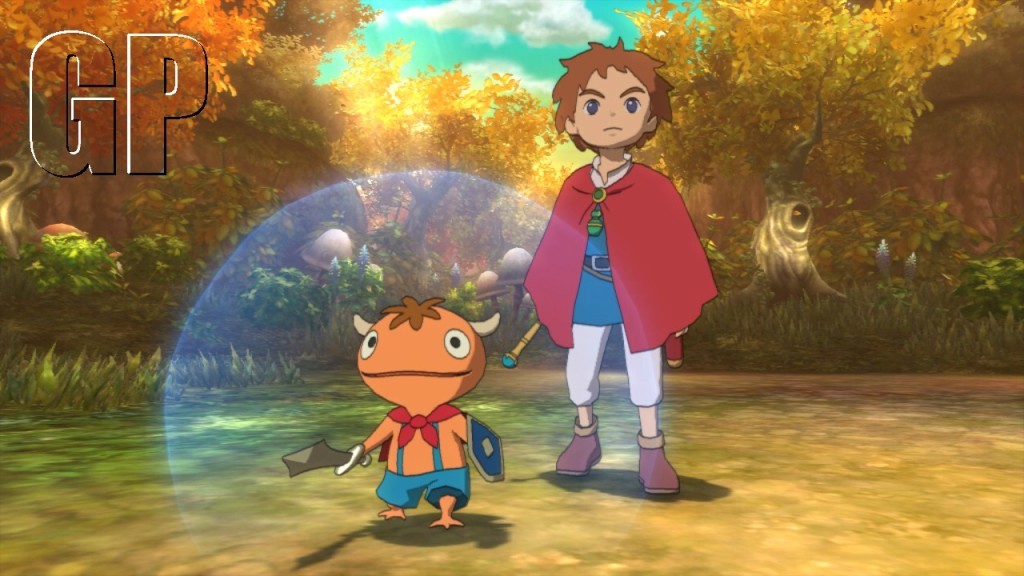
Ostensibly, PS3 RPG Ni no Kuni: Wrath of the White Witch is about the adventures of Oliver (pictured, right), an ordinary boy who becomes the wizard-saviour of another world. But it’s not, not really. Meet one of Ni no Kuni’s real heroes (on the left): Mar Mite, melee fighter, bane of enemies from the Winter Isles in the west to Teeheeti in the east, and utterly adorable. Together, Mar Mite and friends represent what is best about Ni no Kuni – and what is worst.
Clippings: The Old JRPGs and the New
While this blog tends to focus on strategy games, there is another genre I love just as much — the JRPG. Their sheer length means I tend to play them in parallel with other games, and I’m still making my way through two I started last year: Ni no Kuni: Wrath of the White Witch on PS3 and Persona 4: Golden on PS Vita. I have an… interesting response to Ni no Kuni; in so many ways it exemplifies the mediocre (and often bad) mechanics for which the genre is infamous, but its world and overall experience are so delightful that I keep coming back. I’m working on a piece about NNK‘s strengths; I hope to share it with you soon.
By contrast, Persona 4: Golden, one part dungeon crawler and one part social simulator, mechanically stands head and shoulders above its peers because it recognises the importance of interesting decisions. P4:G’s story runs to a strict schedule (one in-game year) and there is not enough time to do everything and befriend everyone, so it matters how you spend that time! Its predecessor, Persona 3, did something similar with great success; at the time I wrote that P3 was the most I’d ever roleplayed in a single-player RPG. Here is Jon Shafer’s (of Civilization V and At the Gates fame) take on Persona 4 and its genre; he makes the point that “interesting decisions” and “relaxing game” are not necessarily compatible.
More recently, I’ve tossed two more RPGs into the stew: Playstation-vintage Final Fantasy VIII and the more recent Wii release The Last Story. I used to be a huge FF8 fan — in fact, I’m sitting under a pair of FF8 posters as I type this. Its early 3D graphics have not aged well, but its world still brims with attention to ambient detail — the very thing I love about JRPGs. The Last Story, meanwhile, is from the creator of Final Fantasy but so far — I’m all of 30 minutes in — feels very different, with more action-oriented combat and an emphasis on coordinating with AI teammates. I look forwad to playing more!
Here are this week’s other links:
- The man who got Aeris’ theme (Final Fantasy VII) onto a classical music site. It’s a lovely song!
- Chrono Cross never came out in PAL territories, but this retrospective is tempting me to buy it from the US PSN store.
- If you played Final Fantasy VI, this piece of fanart should make you grin.
- Not JRPG-specific: the heaven and hell of video games. I posted this link years ago, not long after I started this site, but it’s so good I had to share it again.
- Not JRPG-related at all, but very cool: this is an absolutely gorgeous fan map of Midgard, a “Vikings conquer Europe” alternate timeline from the GURPS book I linked last month.
Hearts of Iron IV Q&A, with Dan Lind
 I am a long-time fan of Hearts of Iron, a grand strategy series in which players control all aspects of a World War II nation, from armies and fleets to research, production, and diplomacy. So when developer Paradox Development Studio took the wraps off the upcoming Hearts of Iron IV, I was eager to find out more. Read on for my email Q&A with project lead Dan Lind, in which I ask about his vision for the project and how it will fit into the series:
I am a long-time fan of Hearts of Iron, a grand strategy series in which players control all aspects of a World War II nation, from armies and fleets to research, production, and diplomacy. So when developer Paradox Development Studio took the wraps off the upcoming Hearts of Iron IV, I was eager to find out more. Read on for my email Q&A with project lead Dan Lind, in which I ask about his vision for the project and how it will fit into the series:
Peter Sahui: Hello Dan — welcome to the site!
It’s been five years since Hearts of Iron III launched, and in your first developer diary, you talk about lessons learned from Crusader Kings 2, Europa Universalis 4, and HOI3. What inspiration have you drawn from other sources — other games, books, etc.?
 Dan Lind, Project Lead: As you know, Hearts of Iron is, like most Paradox Development Studio titles, a grand strategy game in an open sandbox and victory is determined by the goals you set up for yourself during the WWII time-span. The Hearts of Iron series is all about taking control of your nation in the years around World War II and leading it to victory – a wargame where you have to look at the entire war and take decisions in a multiple of aspects to reach victory. So Hearts of Iron IV is at its core is not a pure old-fashioned wargame.
Dan Lind, Project Lead: As you know, Hearts of Iron is, like most Paradox Development Studio titles, a grand strategy game in an open sandbox and victory is determined by the goals you set up for yourself during the WWII time-span. The Hearts of Iron series is all about taking control of your nation in the years around World War II and leading it to victory – a wargame where you have to look at the entire war and take decisions in a multiple of aspects to reach victory. So Hearts of Iron IV is at its core is not a pure old-fashioned wargame.
Therefore, to be frank, there are not a lot of other grand strategy wargames to look at unfortunately. But I’m personally fan of World of Tanks as well as War Thunder and I hope we can bring in more of their flavor and attention to detail. My team also really liked Unity of Command when we tried it since it is a pretty different game that shows how you can make a fun historical strategy game and still keep things easy to understand. When it comes to books, we have tried to have both a top-down and bottom-up approach. So we take a lot of inspiration from Winston Churchill’s books on WWII as well as writings by Otto Carius (a famous German tank commander) as well as memoirs of Russian artillerymen.
Musical Monday: “We Will Not Be Forgotten” (The Banner Saga), composed by Austin Wintory
This week’s song (by Austin Wintory, of Journey fame) is The Banner Saga‘s main menu theme. It’s very short, just 45 seconds, but it’s lovely and does a great job of setting the emotional tone for the game. Enjoy!
The Banner Saga: Concluding thoughts
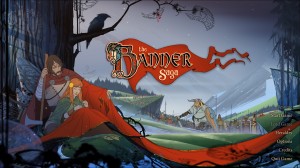
After finishing The Banner Saga, I thought I’d expand on the conclusions I reached last week. I’m still happy with the game and its tactical battles, which become deeper and richer with each new character introduced. I do want to revisit story, an area where Banner Saga is ambitious, inconsistent, but ultimately successful, notwithstanding flaws in its narrative structure – specifically, its use of two distinct stories told from two main points of view.
Now, I should stress that the problem is not with multiple storylines or multiple POVs. The idea itself is great, one I’d like more RPGs to adopt – it works in other media, it works in books and TV, it works in the handful of other games to use it. The problem is Banner Saga’s implementation: one is clearly the main story, with the other being a sideshow. The former is a video game example of an epic, a term wonderfully defined by the Encyclopedia of Fantasy:
An epic is a long narrative poem which tells large tales, often incorporating a mixture of legend, myth and folk history, and featuring heroes whose acts have a significance transcending their own individual happiness or woe. The classic epic tells the story of the founding or triumph of a folk or nation…
This gives the main story a purpose, escalating tension, an arc. The side story lacks these, and isn’t even well integrated into the larger tale. From a mechanical perspective, I like the side story – it was there that I got the hang of the battle system. But it drags on narrative pacing, and should have been either plotted better or else cut down to brief interludes.
As for the main story itself, it’s good. It is clearly part 1 of an intended trilogy, all but screaming TO BE CONTINUED, and suffers from several niggles. At times, characters will say something jarringly modern (1), or Abruptly Drop Proper Nouns. The characters themselves are tersely introduced, with the non-plot characters only receiving a single conversation to flesh them out. But Banner Saga redeems itself with moments of emotional power – desperate, heroic, poignantly beautiful.
It’s those moments that stick in my mind as I write, moments that made me breathe “wow”, and “this is awesome”, and “that was perfect”, and my complaints pale next to that. Taken together with the very good battle system, The Banner Saga is an impressive outing by Stoic Studio, and I look forward to the next in the series.
The basis of my comments: I finished the game after 17 hours, per Steam.
Clippings: Strategy Preview Edition
For the last few weeks, I’ve been watching the Kickstarter campaign for Unsung Story: Tales of the Guardians, a collaboration between mobile developer Playdek and tactical RPG legend Yasumi Matsuno. Imagine if Brian Reynolds were to announce a spiritual successor to Alpha Centauri; that’s how much I’d like to see Matsuno follow up Final Fantasy Tactics. But dig deeper, and I have several reservations. The game will only come to my platform of choice, Vita, if the Kickstarter hits a distant stretch goal. Three of Matsuno’s regular collaborators have been tapped for the campaign (artist Akihiko Yoshida; composer Hitoshi Sakimoto, whose work I’ve featured on this site; and localiser Alexander O Smith), but only Yoshida will be involved at the base level — the other two are also remote stretch goals. And, at least until this update, detail about game mechanics has been scant — I can’t help but feel this campaign would have done better had the project been further along. I’ve reached out to Playdek for an interview; in the meantime, here are good articles by Rock, Paper, Shotgun (h/t Matt Bowyer) and USGamer.
In other news:
- Previews are now out for Paradox’s latest announcements. For Hearts of Iron IV, check out Strategy Informer and PCGamesN; for CK2: Rajas of India, I like the articles from PC Gamer and Rock, Paper, Shotgun. There’s less detail on Runemaster and EU4: Wealth of Nations, but IncGamers has a little bit about the latter.
- And speaking of Paradox, I laughed at some of the bizarre screenshots in this compilation.
- Lastly, PCGMedia has a good preview of Wargame: Red Dragon. The changes to the campaign system sound great!
Musical Monday: Reader’s Choice Edition
It’s time to round up the suggestions I received for Musical Monday! There are ten altogether below the cut; some were listed in the comments beneath my initial post, while others were the subject of a write-in. Above each song, I’ve added my own thoughts; the actual videos are embedded inside spoiler tags, to avoid crashing/lagging browsers. There’s some good and varied music here, so happy listening, and thank you all for taking part!
The Banner Saga: Turn-based tactics with a twist
“The gods are dead.”
So opens Stoic Studio’s The Banner Saga, a low-fantasy tactical RPG with a cool and unique combat system. It’s so different as to be divisive; but the more I play it, the more I like it.
By way of overview, Banner Saga follows two separate groups as they trek across a land ravaged by shadowy, armoured monsters called dredge (second from the right). Between battles, the current group’s caravan rolls through the countryside (see below), banner streaming behind, and gameplay consists of text events: how do you respond to stubborn villagers, or a troublemaking drunk, or a fire in the distance? These choices affect caravan morale and hence stats in combat, but more importantly, party members can join, leave, or permanently die in these events. And clearly, the developers meant decisions to have consequences, a la XCOM ironman – there is only one quicksave slot, and save ‘checkpoints’ are widely spaced. This is perhaps too effective: I’ve started looking up guides after discovering that I neither enjoy character loss, nor have the time or patience to reload. The actual writing is clunky at first (why are quasi-Vikings saying “OK”?), but picks up steam. As at the 60% mark, I find the story interesting, albeit not the main draw.
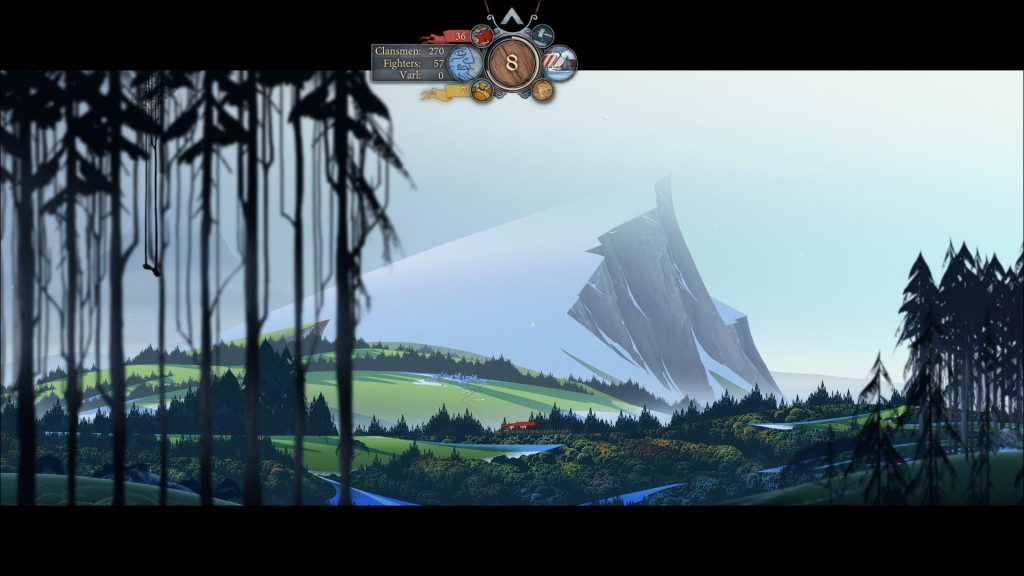
Tearaway – The Verdict
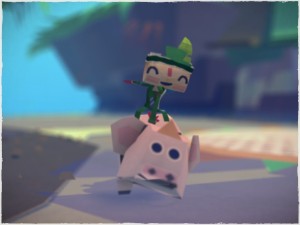
A good toy is an object that is fun to play with.
A game is a problem-solving activity, approached with a playful attitude.
– Jesse Schell, The Art of Game Design: A Book of Lenses
One part game, one part tech demo for the PS Vita, and one part toy; that’s Tearaway, the latest platformer from Media Molecule, the studio behind LittleBigPlanet. It’s short and easy as far as games go, but what makes it special is how those ingredients come together.
Paradox’s Latest Games
Paradox has announced two new games and two new expansions, all of which will come from Paradox Development Studio, its first-party arm. The games are Hearts of Iron IV and a new IP — Runemaster, an RPG set in a world inspired by Norse myth. The expansions are Rajas of India, which will expand Crusader Kings II‘s map all the way to the subcontinent, and Wealth of Nations, which will flesh out EU4‘s trade system and — it seems — add chartered companies such as the British and Dutch East India Companies. Detail is scant at this stage, but I can speculate…
Of the four, I’m most interested in Rajas. It should be reasonably likely to pan out: Paradox has plenty of experience producing expansions for Crusader Kings II, a game that has been out for two years. It’ll be unique: other than Champion of the Raj, have there been any other historical strategy games set in India? And I can’t wait to see the alternate histories that’ll arise from the collision of Norse, Indians, and Mongols. (It makes me wonder if anyone at Paradox has read a delightful book named GURPS Alternate Earths 2, which contains a timeline in which super-Vikings made it all the way to Southeast Asia.) I’m also interested in Wealth of Nations, which promises to cover one of my favourite aspects of the period, but I’d have to see more specifics.
The new games are more of a wild card. Hearts of Iron 3 was an interesting but unsuccessful design experiment, and IV could be very good or very disappointing, depending on the extent to which Paradox learns from past mistakes. About the only thing we know is that “battle plans”, a HOI3 feature allowing players to doodle arrows on the map, can now be used to give orders; this suggests that automation, HOI3‘s central (and most unique) concept, will return in hopefully improved form. I’d guess HOI4 will improve over 3 — Crusader Kings 2 and EU4 marked a clear upturn in the quality of Paradox games — but for now, it’s too early to tell.
Meanwhile, Runemaster will be Paradox’s first in-house RPG. (This surprised me, incidentally — I was expecting a strategy game in that setting, along the lines of Holistic Design’s Hammer of the Gods.) Paradox describes it as follows:
Runemaster is an RPG set in a fantasy realm based in the rich, majestic traditions of Norse mythology, casting each player in the role of a unique champion in a time of chaotic upheaval. Procedural maps and quests will ensure that no two playthroughs are identical, allowing players to tell a saga that is uniquely their own. Explore vast vistas through the six worlds of Norse myth, command troops in tactical combat, and define your champion through the choices they make.
It’ll be interesting to see how Paradox, a strategy developer, adapts to the new genre. Perhaps as a newcomer, it’ll be more innovative — compare Dragon Commander, a genre-blending strategy game from a RPG studio. Like HOI4, I can see this going either way, but it may be one to watch regardless.
Clippings – 19 January 2014
I’ve recently finished Tearaway, the PS Vita platformer from the folks behind LittleBigPlanet, and it’s a real charmer. Details coming in my review — I’ve already written half, so stay tuned!
- As a reminder, I’d love to hear your suggestions for Musical Monday. I’ve had two entries so far, both from longtime reader Josh – any more?
- Final Fantasy VI for Android is now out — but not everyone likes its visual style. Speaking of Final Fantasy, I’ve seen Lightning Returns, the latest Final Fantasy XIII spin-off, compared to the sainted Valkyrie Profile, and now I’m intrigued. Anyone tried either FFVI (Android) or Lightning Returns?
- A purported attempt to smuggle escape aids into German PoW camps… via Monopoly sets.
- This meme/cartoon is about Victoria 2, but it also applies to every other AI ally in a strategy game.
- And here is a (temporarily) themed Dark Souls cafe in Tokyo, complete with “estus flasks”.
Musical Monday: “Memories of the City” (Persona 3), composed by Shoji Meguro
For the first Musical Monday of 2014, I’ve chosen a song first heard when the heroes of Persona 3 welcome in the new year, and unlike most of the songs I post, this one is not cheery, exciting, or energetic. There’s a sadness to it — but also a sense of quiet, determined strength. I like it a lot, and I hope you will, too.
Games of the Year: 2013
 As promised, here is my list! As with last year, I’ve highlighted noteworthy achievements, as opposed to trying to single out favourites (so you will see some that I thought were more interesting than fun). I’ll kick off with what I thought were the year’s overarching themes:
As promised, here is my list! As with last year, I’ve highlighted noteworthy achievements, as opposed to trying to single out favourites (so you will see some that I thought were more interesting than fun). I’ll kick off with what I thought were the year’s overarching themes:
Theme of the year I: march of the small games. Every year has its notable short and/or cheap indie games, such as FTL in 2012, and in 2013 these included Skulls of the Shogun, Brothers: A Tale of Two Sons, Papers: Please, and Gone Home. However, the year also saw a large publisher, Ubisoft, throw its hat into the ring with Call of Juarez: Gunslinger and Far Cry 3: Blood Dragon. Ubisoft is set to continue this trend with Child of Light, and it’ll be interesting to see the extent to which other publishers follow – especially after Tomb Raider missed Square Enix’s expectations, sparking the latest bout of soul-searching about the future of AAA games.
Theme of the year II: iteration. In 2012, my favourite games (XCOM, Wargame: European Escalation, Analogue: A Hate Story), as well as other notable titles (FTL, Journey) were all quite novel. Even XCOM, while thematically faithful to the 1994 original, was mechanically unique. 2013, though, was more like 2011 in its preponderance of evolutionary rather than revolutionary games, from the big end of town (Assassin’s Creed IV) to the little guys (Dominions 4), plus expansion packs (Civilization V: Brave New World, XCOM: Enemy Within). That said, we’ll see exceptions below.
Announcing Tataraba: A Princess Mononoke Mod for Dominions 4
I am very pleased to unveil a project I’ve worked on for some time — a Dominions 4 mod inspired by the classic anime movie Princess Mononoke! The mod is fully playable, although it doesn’t yet have its own sprites, and balance remains a work in progress. It adds one new Late Era faction, Tataraba, whose features are below:
2013 in review
Happy New Year! Every year, WordPress prepares a nice little report on this site’s activity, and it’s interesting stuff. Did you know that out of the 5 most popular posts this year, 4 related to Paradox games (and two were guest pieces)? And that I had two hits from Greenland, of all places? It was also the site’s most successful year in terms of traffic, with 92,000 page views – 30% higher than 2012 (71,000) and almost four times the traffic in 2011 (25,000).
2013 was a success in other ways. It was the year I got serious about interviewing developers, starting with Jon Shafer (At the Gates) in February and culminating in Johan Karlsson and Kristoffer Osterman (Dominions 4) in October. After the success of 2012’s XCOM Let’s Play, I had a lot of fun creating LPs for two of the year’s strategy games, Europa Universalis IV and Wargame: AirLand Battle. And I’m quite proud of my analysis of Total War: Rome II, which used Rome II as a starting point to explore what makes a good strategy game.
That said, this came at a price — some of my most rewarding pieces have been retrospectives and thematic articles, but I was too caught up in new games to write many of those in 2013 (though I did write about how several games approached violence). This means I have several JRPG retrospectives on my to-do list going into the new year — in particular, one about Valkyrie Profile, a classic that I replayed and re-loved during 2013.
Over the next few days, I’ll be posting about my favourite games of 2013. Beyond that, a number of games in 2014 may be worth watching: the first single-player instalment of Banner Saga; the third game in the Longest Journey/Dreamfall series; Elite: Dangerous; Mad Max; Watch Dogs; Tropico 5; The Sims 4; Wargame: Red Dragon; the PS3/Vita versions of Final Fantasy X & X-2; and the Android version of Final Fantasy VI.
Finally, none of this would be possible without you — the readers. Thank you for your time and support, and I look forward to seeing you around!
Clippings: Holiday Edition
Hope you are all having a great holiday season! Here are the links I have for you:
- The best of the bunch isn’t related to gaming (and has done the rounds for a while – I first saw a variation years ago) but is too good not to share. My favourite: “expand (a+b)^n”.
- The Steam Christmas sale is under way, but the more impressive deals, if you have a US address, can be found at Amazon. Glancing through their catalogue, I’ve seen Europa Universalis IV for $10, the excellent and under-loved Skulls of the Shogun for $5, all three Bioshock games for $15, and XCOM plus the Enemy Within expansion for $20. Worth a look!
- Speaking of Amazon, does this ad remind any other science fiction buffs of Bat Durston?
- This BBC article about the sustainability of the Hollywood blockbuster model sounds a little familiar after the last 12 months of AAA gaming. However, Hollywood seems to be cleverer — only 10% of its blockbusters flop, down from 50% a few decades ago.
- With a beta of Wasteland 2 now playable for early customers, this is a good time to revisit this RPS interview about the original Wasteland. The best part is the anecdote at the end.
- I missed Final Fantasy X (and its less-regarded sequel, X-2) on PS2, so I’m quite pleased that they’ll be coming soon, in English, to the Vita.
Musical Monday, Christmas/New Year 2013: “Baba Yetu” (Civilization IV), composed by Christopher Tin
I’ve featured “Baba Yetu” before, but I can think of no better song for the current season of hope and goodwill. Enjoy the music, and may you all have a wonderful Christmas and New Year!
Musical Wednesday: “Time To Make History” (Persona 4: Golden), composed by Shoji Meguro
This week’s song is the battle music for Persona 4: Golden, which replaces (most of the time) “Reach Out To The Truth”, the battle music in the PS2 version of the game. Like its predecessor, this is energetic, upbeat, and effective; if forced to choose, I’d say the PS2 music is the better of the two, but this is still well worth a listen. Enjoy!
Clippings: Interstellar Edition
Over the weekend I’ve spent a bit of time with Small World 2, the newly released Steam port of the board game, and I quite like it – it’s simple but well-designed, worth the money I shelled out on Kickstarter. If you enjoy board games and light strategy games, such as last year’s Ticket to Ride, this is one to check out.
Here are the interesting links I’ve found:
- Speaking of Kickstarters, remember one earlier this year for Maia, a sort of Dungeon Keeper-on-an-alien-world? Eurogamer’s impressions of the alpha are fascinating, and make the game sound almost like science fiction Dwarf Fortress.
- Seminal space game Elite was before my time, but RPS has a good preview of upcoming sequel Elite Dangerous (hat tip to reader Peter Davies).
- While many space games appear similar, upcoming first-person action/strategy game Flagship sounds as though it’ll be unique. Here is Space Game Junkie’s interview with the developers.
- In terrestrial news, I hear good things about 3DS JRPG Bravely Default and its battle system. Anyone tried it out?
- I am a huge fan of PS2 classics Ico and Shadow of the Colossus, and here is an interview with creator Fumito Ueda. No update on The Last Guardian, sadly, other than a somewhat ominous comment by Ueda that his “creative work was mostly finished a long time ago.”
- And finally, here is an interesting piece about the state of the Japanese games industry, which (amongst other things) argues that “2013 was the year in which Japan discovered independent gaming and crowdfunding”. If you were a fan of PSP RPG Trails in the Sky, this article is almost worth reading just for the concept art from the upcoming sequel.
I want YOUR soundtrack suggestions! (December 2013)
Several folks have been kind enough to recommend various songs to me, ranging from period music in Assassin’s Creed IV to the surprisingly heroic main theme of Evil Genius. Over the next few weeks I’d like to round up a “reader’s choice” edition of Musical Monday, so if you’ve come across a particularly memorable, effective, or plain enjoyable piece of game music that you’d like to highlight, please let me know in the comments!
Musical Tuesday: “Guile’s Theme” (Street Fighter II), composed by Yoko Shimomura
“For you, the day Bison graced your village was the most important day of your life. But for me, it was Tuesday.” — M Bison, Street Fighter
I hadn’t planned to choose Guile’s Theme as this week’s song. I’d originally picked out another song… and then, on Monday, I couldn’t log into the site. Now it’s Tuesday, and I couldn’t resist the urge to combine one of video gaming’s classic, catchy, iconic themes with the above meme. As an added bonus, this even ties into previous Musical Mondays — Yoko Shimomura, who composed most of the character themes for the arcade version of Street Fighter II, eventually went on to compose much of the (excellent) soundtrack of Xenoblade Chronicles. Below the cut, I’ve posted a video that rounds up 55 minutes’ (!!!) worth of Guile themes from various Street Fighter games — if you ask me, the original is still the best. Enjoy!
Wreck-it Ralph lives up to the hype
Over the weekend I finally caught Disney’s Wreck-it Ralph on TV, and wow, I’m glad I did. In many ways it’s typical family movie fare, but of course it’s more than that; packed with in-jokes, homages, and a fair few cameos, it’s a delightful love letter to 30 years of video games. If you’re part of its target market (and if you’re reading this blog, you probably are), then I heartily recommend it. Go in blind — don’t read synopses, don’t watch trailers — and I hope you have fun!
Clippings: Android Battles at Antares Edition
To this day, Master of Orion II is still the best ‘traditional’ (i.e. not Distant Worlds) space 4X game I’ve encountered, and now I can play it on the go! Above is a screenshot of MOO2 running on an Android tablet; with an 8″ screen (Samsung Galaxy Note 8) everything is large enough for comfort, although I do recommend a stylus for tapping the little plus and minus signs on the ship design screen. There is a little lag, and trying to “right-click” can be a hassle, but these are minor blemishes on an experience that is not just playable, but very enjoyable. Here are the steps that I followed; you will need DOSbox and a copy of MOO2 (the game version from GoG works fine; and I’m using DOSBox Turbo, the paid DOSbox port recommended by that link). Now, if I can just work out how to take down that Klackon starbase…
In other news:
- I was not a fan of Total War: Rome II, whose campaign was deeply flawed both in its execution and in its sprawling design. Now, Creative Assembly has announced a new expansion pack covering Caesar’s conquest of Gaul, which will “[offer] a tighter scope in terms of time and geography than Rome II“. We’ve seen this before in CA’s progression from the vast Empire to the more compact Napoleon, so this really represents CA (re-)learning its lessons; time will tell how well Caesar in Gaul succeeds.
- The Psychology of Video Games is one of the most interesting and unique industry-related sites, and two recent pieces (on avatars and game nostalgia) are worth a read.
- Here are two pieces of XCOM-related humour.
- And here are some cool manga-style illustrations that graced a Japanese edition of D&D (hat tip to reader LeSquide).
